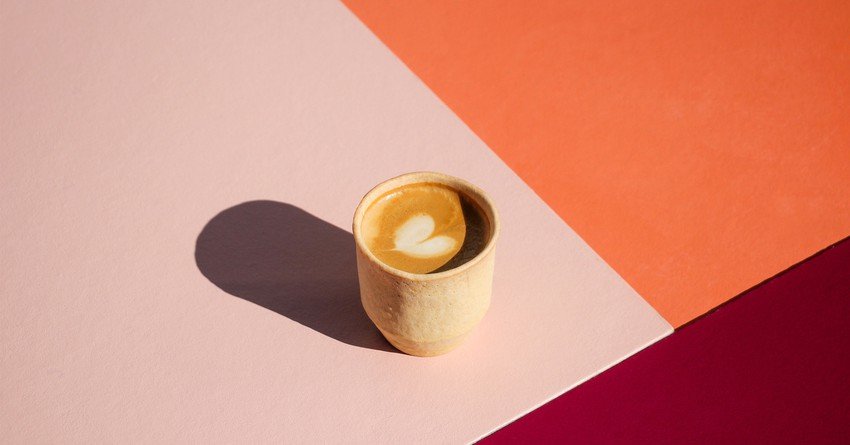
My first question, upon seeing the Twiice edible cups, was: Wouldn’t a biscuit cup go soggy? And what do they taste like?
It turns out they taste more or less like a fortune cookie. Co-founder Jamie Cashmore agrees they’re surprisingly filling. While he cautions me not to start nibbling before the coffee inside is well clear of the cup’s edge, he says they’ve been baked in such a way that sogginess is just not a problem.
The cups are made of a firm biscuit substance formulated by Cashmore, his wife Simone and his parents. The concept was casually mentioned by Simone at a family gathering, but Cashmore says it stuck in his mind for months afterwards.
“She just kind of said it, and we said, ‘That’s cool.’”
He started “playing with muffin tins and that to try and get the shape”, soon beginning to experiment with different mixtures. As Cashmore became more serious about the biscuit cup concept, he sought advice from flour distributors and a well-known Kiwi baker based in Singapore.
The cups’ non-absorption of moisture is down to the way the mixture is processed, Cashmore says. It’s also where the company’s name, Twiice, comes from – like biscotti, the cups are twice-baked.
The experimentation process gained an engineering mindset when Cashmore’s ex-architect father Stephen became involved. Stephen recommended custom moulds, designed the forms for their creation and then came up with a machine to make them.
The machine forms the cups, which are then partly-cooked and cooked again.
Cashmore says the resulting cups are so non-absorbent that he’s poured boiling water into them and left them to sit up to 24 hours without a spill. They’re flexible to the touch at this point, he says, but won’t burst. He’s even tipped the water out from one of these soaked cups, dried it out and successfully used it again.
“They will stay crunchy for as long as it takes for you to drink your coffee.”

Simone, a graphic designer, spent months on Twiice’s branding. The team soft-launched Twiice at the start of June, offering pre-orders to members of the public and stocking one cafes so far – Freaky in the CBD.
Creating packaging to get the product from oven to client was one of the hardest parts, says Cashmore. They ended up going with custom-made packaging from Wellington.
“It’s never been done,” Cashmore says of Twiice’s product. The cups aren’t fragile when handled normally, he says, but when six are shipped to Christchurch they need to be treated as such.
The next challenge will be designing packaging to hold 50 cups, but a further stretch is already upon Twiice – the team is talking to an overseas client who’s interested in buying 1500 cups.
While the business is taking shape, they’re still based at home, where they’ve turned Cashmore’s parents’ kitchen into a commercial kitchen. Cashmore has retained his day job as an account manager and business development manager at Edwards Sound Systems, but is excited about scaling Twiice up.
The sustainability of a zero-waste cup is important to Cashmore, although he understands changing consumers mindsets around throwaway cups will be “a massive job”. The cups also have applications as icecream cups.
He’s currently working on a gluten free cup, and a cup with a chocolate coating on its interior: “The future will be a lot of different cups.”
? 




